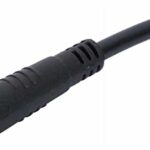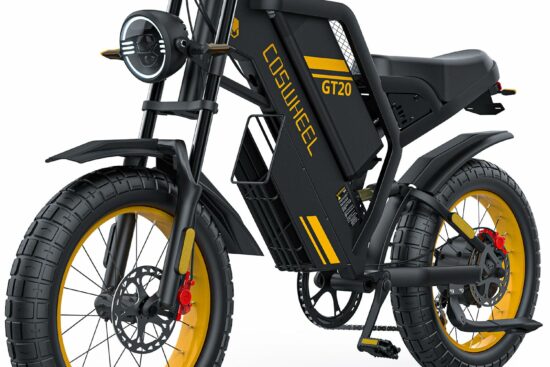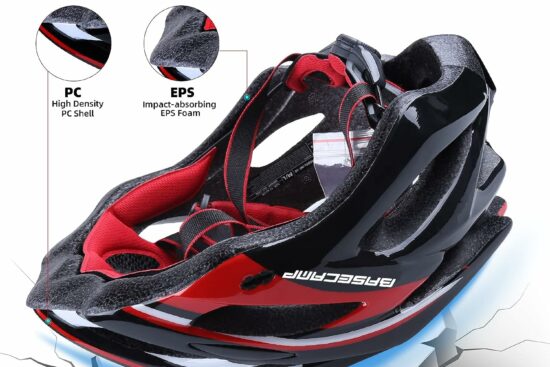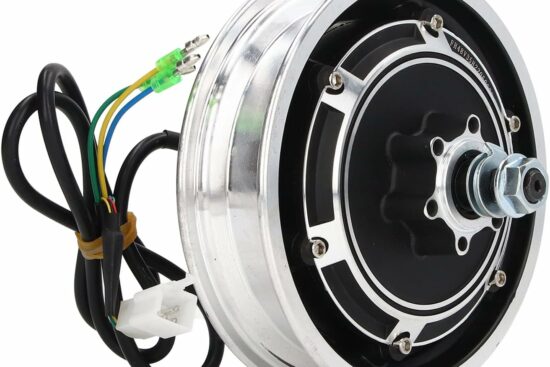
Curious about how e-bikes work? Well, you’ve come to the right place! In this article, we’ll dive into the fascinating world of e-bikes and uncover the mysteries behind their mechanics. Have you ever wondered how these electric-powered bicycles can effortlessly zoom past you with minimal effort from the rider? Well, get ready to have all your questions answered, as we explore the inner workings of e-bikes and discover just how they operate.
In this article, you’ll learn more about the different components that make up an e-bike, such as the battery, motor, and controller, and how they all work together to provide an electrifying riding experience. We’ll also discuss the various types of e-bikes available, from pedal-assist models that provide a boost to your pedaling, to throttle-controlled versions that can propel you forward with just the twist of a handle. So, whether you’re considering buying an e-bike or simply want to satisfy your curiosity, read on to find out everything you need to know about how these amazing machines work.
Introduction
E-bikes, short for electric bikes, have become increasingly popular in recent years as a means of transportation. They offer an efficient and eco-friendly alternative to traditional bicycles, allowing riders to travel further and faster with less effort. In this article, we will delve into the inner workings of e-bikes, explore their various components, discuss their advantages, and provide some tips on maintenance and safety.
What is an e-bike?
Definition and components
At its core, an e-bike is a bicycle that is equipped with an electric motor, a battery, and a controller. These components work together to provide electric assistance to the rider, making pedaling easier and allowing for higher speeds. The electric motor is usually located in the hub of the front or rear wheel, while the battery is mounted on the frame of the bike. The controller manages the flow of power from the battery to the motor, and it also controls additional features such as throttle and pedal assist.
Types of e-bikes
There are several different types of e-bikes available on the market, each designed for specific purposes. Some common types include:
-
Commuter e-bikes: These are designed for everyday transportation and are equipped with features such as fenders, lights, and racks for carrying belongings.
-
Mountain e-bikes: These are specifically built for off-road riding, with features like suspension and rugged tires to handle challenging terrain.
-
Folding e-bikes: These are compact and convenient for urban commuting, as they can be easily folded and stored in tight spaces.
-
Cargo e-bikes: These are designed to carry heavy loads, with large rear racks or front baskets for transporting groceries or other items.

How does an e-bike work?
Electric motor
The heart of an e-bike is its electric motor, which is responsible for providing power and propulsion. The motor can be either a hub motor or a mid-drive motor. Hub motors are located in the center of either the front or rear wheel, and they provide direct power to that wheel. Mid-drive motors, on the other hand, are located near the bike’s bottom bracket and provide power through the bicycle’s gears. The motor is usually powered by the e-bike’s battery and is controlled by the controller.
Battery
The battery is a crucial component of an e-bike, as it stores the energy needed to power the electric motor. E-bike batteries are typically lithium-ion or lithium-polymer, as they offer high energy density and long life cycles. The battery is usually removable and can be charged either on or off the bike. The capacity of the battery, measured in watt-hours (Wh), determines the range of the e-bike. Higher capacity batteries allow for longer rides without needing a recharge.
Controller
The controller is the brain of the e-bike, managing the flow of power from the battery to the motor. It also controls additional features such as throttle and pedal assist. The controller monitors various parameters such as speed, pedal cadence, and torque, and adjusts the motor’s assistance accordingly. Some controllers also come with a display that shows information such as battery level, current speed, and distance traveled.
Throttle and pedal assist
E-bikes can be equipped with a throttle or a pedal assist system, or a combination of both. A throttle allows the rider to control the motor’s power output directly, similar to a motorcycle or scooter. With a throttle, you can simply twist or press a lever to engage the motor and start moving without pedaling. On the other hand, a pedal assist system senses when the rider is pedaling and provides assistance based on the level selected. The higher the level, the more assistance the motor will provide.
Regenerative braking
Some e-bikes also feature regenerative braking, which allows the battery to recharge while slowing down or descending hills. Regenerative braking works by reversing the flow of electricity from the motor and using it to charge the battery. While regenerative braking does not provide the same level of braking power as traditional brakes, it can help extend the range of the e-bike and improve overall efficiency.
Advantages of using e-bikes
Eco-friendly transportation
One of the main advantages of e-bikes is their eco-friendliness. Unlike cars or motorcycles, e-bikes produce zero emissions and do not contribute to air pollution. By choosing to ride an e-bike instead of driving a car, you can significantly reduce your carbon footprint and contribute to a cleaner and healthier environment.
Health benefits
While e-bikes provide electric assistance, they still require physical activity from the rider. Pedaling an e-bike can help improve cardiovascular fitness, build stamina, and strengthen muscles. E-bikes also allow riders to gradually increase their fitness levels, as they can adjust the level of assistance provided by the motor. This makes e-bikes a great option for individuals who may have physical limitations or are recovering from injuries.
Cost savings
Using an e-bike as a mode of transportation can lead to significant cost savings in the long run. E-bikes are much cheaper to purchase and maintain compared to cars or motorcycles. They require little to no fuel, and the cost of charging the battery is minimal. Additionally, e-bikes do not require insurance or registration fees, further reducing the overall cost of ownership.
Convenience
E-bikes offer a level of convenience that traditional bicycles cannot match. The electric assistance provided by the motor allows riders to travel longer distances without feeling fatigued. This makes e-bikes an excellent option for commuting to work or running errands. E-bikes also eliminate the need for finding parking spaces, as they can be easily locked up and stored in compact areas.
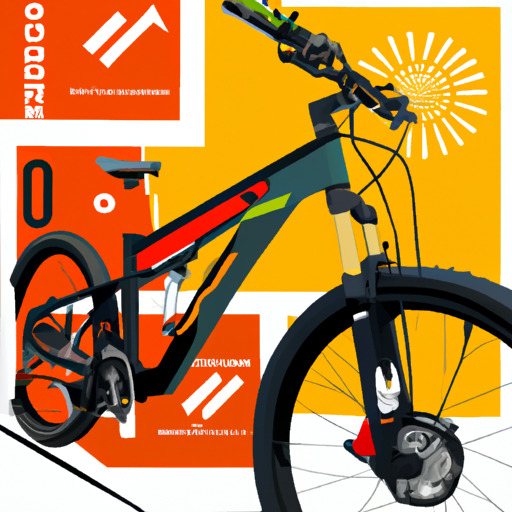
Factors to consider when buying an e-bike
Budget
One of the first factors to consider when buying an e-bike is your budget. E-bikes can range in price from a few hundred dollars for basic models to several thousand dollars for high-end models. Determine how much you are willing to spend and look for e-bikes within that price range. Remember to consider additional costs such as accessories, maintenance, and repairs.
Battery range
The battery range of an e-bike is an important consideration, especially if you plan on using it for long commutes or extended rides. A larger battery capacity will provide a longer range, allowing you to travel further without needing a recharge. Consider your typical riding distance and choose a battery with a range that suits your needs.
Motor power
The power of the motor is another important factor to consider. Motors are typically rated in watts (W) or torque (Nm). Higher wattage or torque ratings usually result in more power and better performance, particularly when climbing hills or carrying heavy loads. Choose a motor power that matches your intended use for the e-bike.
Additional features
E-bikes can come with a range of additional features, such as lights, fenders, racks, or suspension. Consider the type of riding you will be doing and the conditions you will encounter. For example, if you plan on riding in the rain, having fenders to keep you dry can be beneficial. Similarly, if you need to transport items, having a rear rack can be convenient.
Maintenance and care for e-bikes
Cleaning and lubrication
Regular cleaning and lubrication are essential for maintaining the longevity and performance of your e-bike. Clean the bike with a mild soap and water solution, being careful to avoid getting water into the electrical components. Lubricate the chain and other moving parts regularly to reduce friction and ensure smooth operation.
Battery maintenance
Proper battery maintenance is important for maximizing its lifespan and performance. Keep the battery clean and dry, and avoid exposing it to extreme temperatures. Follow the manufacturer’s guidelines for charging and storing the battery, and avoid letting it completely discharge for extended periods. If you are not using the e-bike for an extended period, it is recommended to store the battery at around 50% charge.
Regular check-ups
Just like any other bicycle, e-bikes require regular check-ups to keep them running smoothly. Inspect the tires, brakes, and other components regularly for wear and tear. Make sure the spokes are properly tensioned, and the wheels are true. If you are not comfortable performing these check-ups yourself, take your e-bike to a professional bicycle shop for regular maintenance.
Storage recommendations
When not in use, it is important to store your e-bike in a safe and secure location. Ideally, store it in a dry area to prevent moisture and rust from affecting the electrical components. If possible, store the battery separately from the e-bike in a cool and dry place. Consider using a sturdy lock or a secure storage area to prevent theft.
Safety precautions for riding an e-bike
Wearing appropriate safety gear
When riding an e-bike, it is essential to wear appropriate safety gear to protect yourself in case of an accident. At a minimum, wear a properly fitting helmet to protect your head. Consider also wearing reflective clothing to increase your visibility to other road users, especially when riding at night.
Obeying traffic laws
E-bikes are subject to the same traffic laws and regulations as traditional bicycles. Obey all traffic signs and signals, and ride in the same direction as traffic. Use hand signals to indicate your intentions, and yield to pedestrians and other vehicles when necessary. Always be aware of your surroundings and ride defensively to minimize the risk of accidents.
Understanding e-bike limitations
While e-bikes provide electric assistance, they still have certain limitations compared to cars or motorcycles. E-bike motors have a maximum speed and can only assist up to a certain level of effort from the rider. Understanding these limitations is crucial for safe riding. Avoid pushing the e-bike beyond its capabilities and always ride within your comfort zone.
Comparison between e-bikes and traditional bicycles
Speed and distance range
One of the main advantages of e-bikes over traditional bicycles is the ability to travel faster and cover longer distances with less effort. The electric assistance provided by e-bikes allows riders to maintain higher speeds and tackle more challenging terrains. This makes e-bikes a great option for riders who need to commute longer distances or ride in hilly areas.
Effort required
While e-bikes provide electric assistance, they still require physical effort from the rider. Riders have the option to adjust the level of assistance provided by the motor, allowing them to choose the level of effort they want to exert. Traditional bicycles, on the other hand, rely solely on human power, requiring more physical effort for propulsion.
Hills and inclines
One of the notable differences between e-bikes and traditional bicycles is their performance on hills and inclines. With an e-bike, riders can easily conquer steep hills and inclines without breaking a sweat, thanks to the electric assistance provided by the motor. Traditional bicycles require more physical effort to climb hills, and riders may need to adjust their gear ratios or exert more power.
Environmental impact
When it comes to environmental impact, e-bikes have a clear advantage over traditional bicycles. While both modes of transportation are eco-friendly compared to cars or motorcycles, e-bikes produce zero emissions and do not contribute to air pollution. Traditional bicycles, while not emitting any pollutants, still rely on human power, which can result in perspiration and increased water usage for washing clothes.
E-bike regulations and laws
Local regulations
E-bike regulations and laws can vary depending on your location. It is important to familiarize yourself with the specific regulations in your area before riding an e-bike. In some countries, e-bikes may be classified as bicycles and allowed on bicycle paths and lanes. In other areas, e-bikes may require registration, licensing, or insurance. Research local regulations and comply with them to ensure a safe and legal riding experience.
Age and licensing requirements
In many places, e-bikes have specific age and licensing requirements. In some jurisdictions, e-bikes can be ridden without a driver’s license, as they are classified as bicycles. However, certain age restrictions may apply. It is important to check the specific regulations in your area to determine if any age restrictions or licensing requirements apply to e-bike riders.
Insurance and liability
In terms of insurance and liability, e-bikes are typically treated similarly to traditional bicycles. As e-bikes are considered low-powered vehicles, they are usually covered by personal liability insurance, which is often included in homeowners or renters insurance policies. However, it is important to check with your insurance provider to ensure that you have appropriate coverage for your e-bike.
Conclusion
E-bikes offer a convenient and eco-friendly mode of transportation, allowing riders to travel further and faster with less effort. By understanding how e-bikes work and considering the various factors when purchasing and maintaining one, you can fully enjoy the benefits they offer. Remember to ride safely, obey traffic laws, and be aware of the limitations of e-bikes. With proper care and responsible riding, e-bikes can revolutionize your daily commute and make your journeys more enjoyable.





